The fronts of these very heavy anklets are more than 7 cm high. They have an Indian background. They were either made in Gujarat, or more often by Indian silversmiths in Oman. Continue Reading
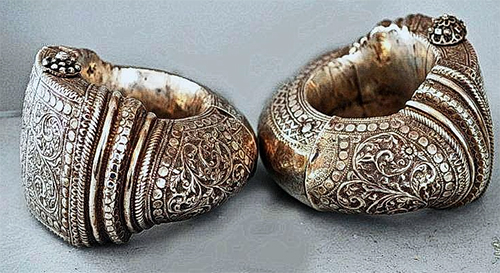

The fronts of these very heavy anklets are more than 7 cm high. They have an Indian background. They were either made in Gujarat, or more often by Indian silversmiths in Oman. Continue Reading
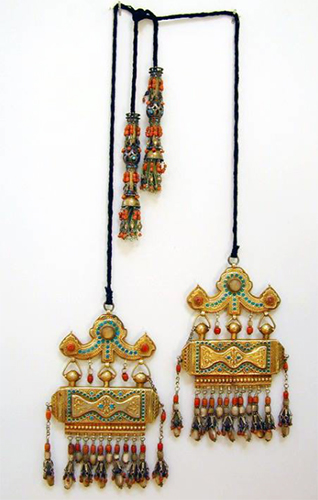
Kushtumor are one of a variety of tumars, or protective amulets worn on the chest. Ours are closely related in workmanship, design, and age, to the 19th Century pieces held by the Museum of Applied Art of Uzbekistan in Tashkent. Each amulet has a cord with a counterweight attached to it at the end. The… Continue Reading
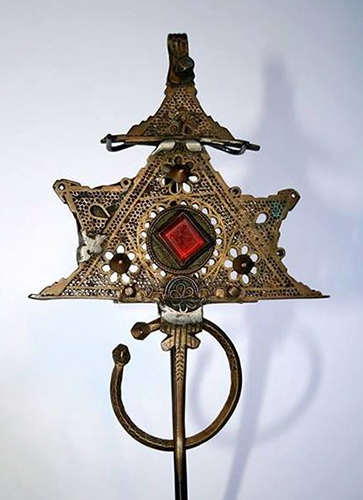
A wonderful ancient Moroccan silver alloy (and glass) fibula from Tiznit Province in our possession. A piece of great character. Note the ancient “native” repairs. And the difference between a piece like this and so many of its inferior modern counterparts. As for the technique: each “wormhole” one sees here is in fact an individual… Continue Reading
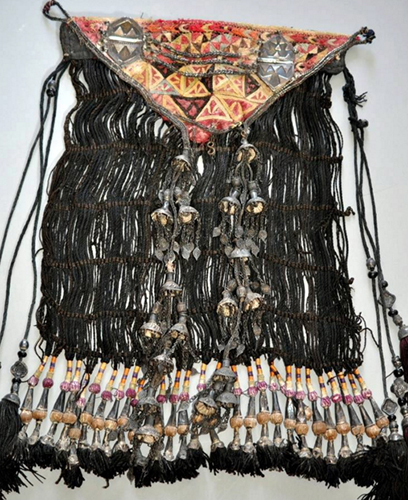
Johannes Kalter, author of books on Uzbekistan, Turkestan, Syria, and the Swat Valley, shows pieces of just this kind in Turkestan and Uzbekistan. In his opinion, the veils were definitely worn in front of a woman’s face. The triangle would have been worn high up on the head with the tassels falling down the back.… Continue Reading
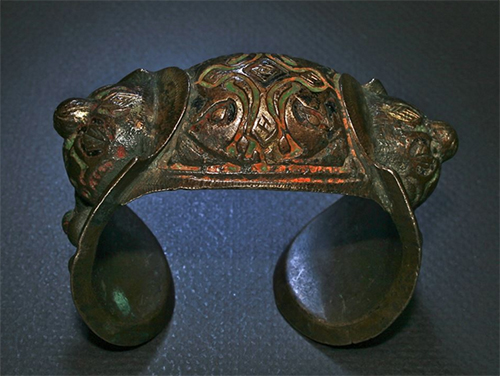
Like many ornaments from Bulgaria, this piece does not draw on precious materials, but as a result, the bracelet has an honest and lively appeal. Concerning its origin, it would probably be more accurate to say “made in what is now the province of Edirne, Turkey (historically part of the region of East Thrace), close… Continue Reading
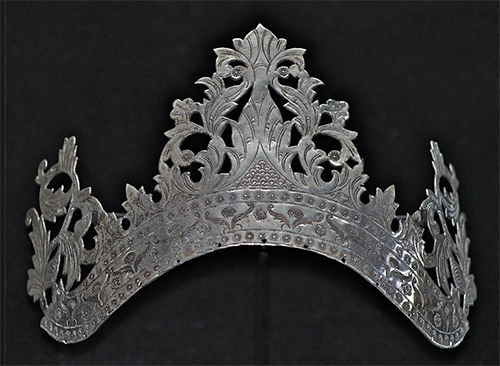
Called a pa sangko, lengkar suon, this crown is normally surmounted by sprays of gold tinsel leaves. It is worn by brides in South Sumatra, Bengkulu, and Lampung, Indonesia, and also used for dancing by young girls. See, for the type, Richter-Carpenter’s splendid and informative book Gold Jewellery of the Indonesian Archipelago, pp. 268-9. Continue Reading
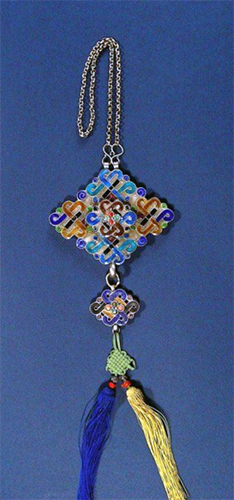
This Mongolian amulet with silk fringe was worn on a silver chain, probably by a woman. It was made to protect a single person, and was enameled on one side with a plain silver back. Continue Reading
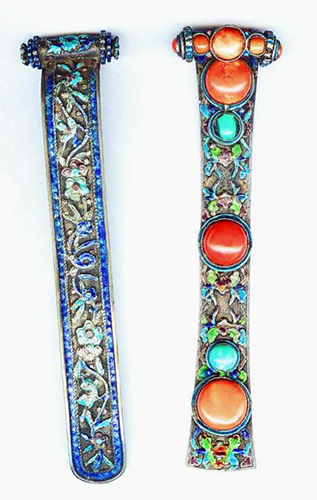
These hair pins come from China, Inner Mongolia, and they are frequently grouped together and arranged as sets. Continue Reading